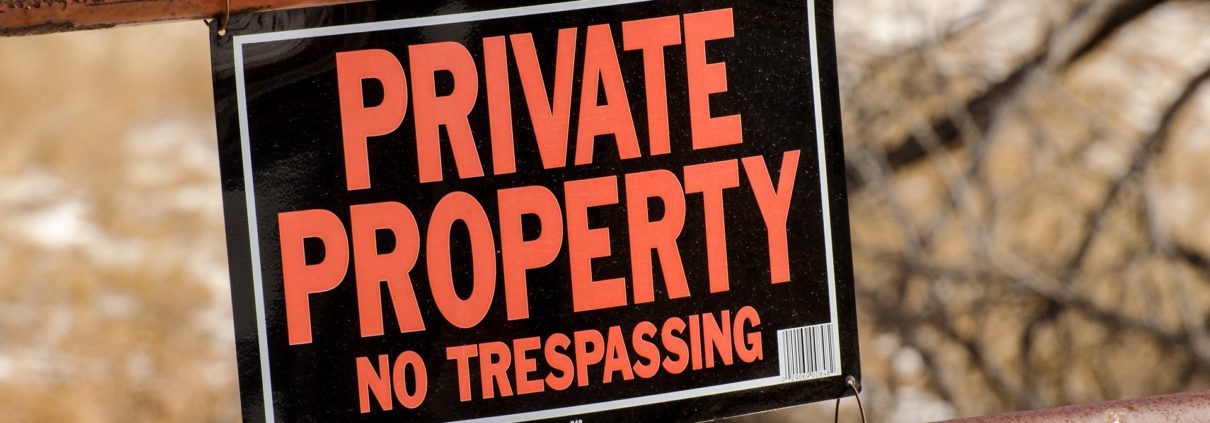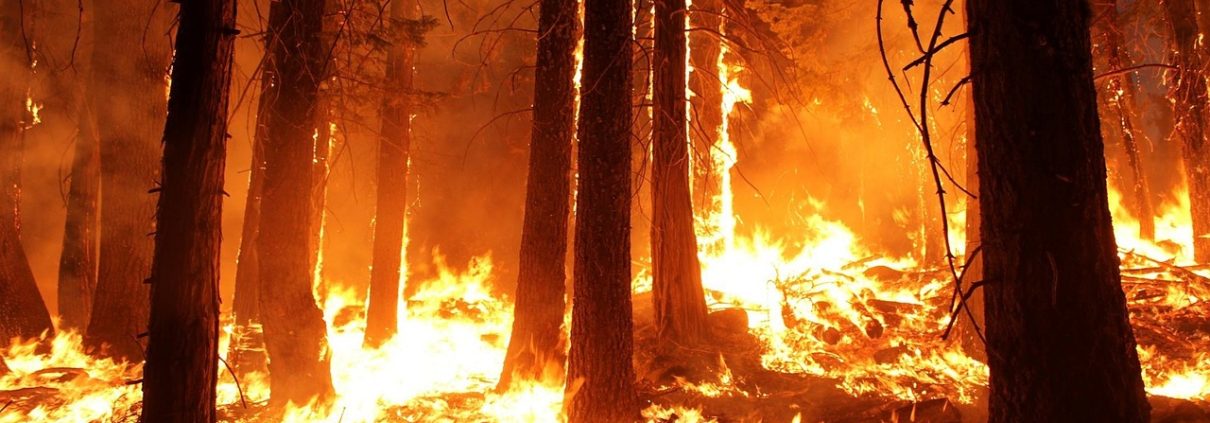Diving into Water Rights: A Primer for Land Agents
“Water is the ultimate zero-sum game; the volume of water used by one right holder sourced from our common pool of water ultimately diminishes, to some degree or other, the volume of water available to other water right holders.”
– Dr. Charles Porter, 2014
Nothing is more basic to successful human congregate settlement than the management and sharing of freshwater resources; the way in which Americans manage their freshwater resources defines the overall quality of life. Today’s REALTORS® must gain a working knowledge of water rights in their geographic area of practice.
Who Owns the Water?
The first question that arises – who owns water in the United States, the public or the individual citizen? The answer is an eternal favorite – it depends – on the geological container in which the water resides. Ownership of water varies from state to state but is always categorized in three geological containers in which water resides, surface water, diffused surface water, and groundwater.
Surface water is water that exists naturally in a river, creek, or stream. Most states own their surface water and describe it as water in a “watercourse” that is generally defined as:
…a channel, comprising well-defined bed and banks, a current of water, and a permanent source of supply. The flow of water need not be continuous, and the channel may be dry for long periods of time.
There are two state-by-state variations of surface water rights in the United States, riparian rights and appropriative rights. Riparian water rights are based upon ownership of land appurtenant to surface water; riparian rights tend to be the basic water law in states east of the Mississippi River. Riparian rights are usufructs only, or rights that allow use of the water but not ownership of the water. Appropriative rights are based upon a grant or license from the state to use the water for a certain purpose. Appropriative rights tend to apply to those states west of the Mississippi River. In most western states, appropriative rights are further permitted based upon first-in- time, first-in-right, a concept referred to as prior appropriation.
The United States “Americanized” the traditional English Common law riparian concept in 1826. According to Professor of Law T. E. Lauer the origin of the American riparian doctrine was rendered by a United States District Court in Tyler v. Wilkinson:
The origin of the American riparian doctrine of water use, whereby each owner of land upon the banks of a watercourse has the right to make a reasonable [emphasis added] use of the water, is customarily placed shortly after the year 1825. Traditionally, the creation of the riparian doctrine has been ascribed to two of the greatest early American jurists, Joseph Story and James Kent.
The introduction of the reasonable use idea is the driving concept in the permitting of surface water in most states and in some states, even applies to legal uses of privately owned groundwater. As opined by Jurist James Kent in 1828, the American definition of the reasonable use of water is:
All that the law requires of the party, by or over whose land a stream passes, is, that he should use the water in a reasonable manner, and so as not to destroy, or render useless, or materially diminish, or affect the application of the water by the proprietors below on the stream.
What constitutes a reasonable use of water is regularly a matter of hot debate between up-streamers and down- streamers. The situational aspect of reasonable use is subjective and determined in the eyes of the beholder; the same specific use can be usually be argued for or against easily and credibly. Most states broadly define reasonable use of water as water used for irrigation, municipal, domestic and livestock, and industrial purposes.
“Today’s REALTORS® must understand the human-water interface and the foundational role water plays in the quality of life of their communities.”
The second geological container is “diffused” surface water, or water that runs across the surface of the land either from rainfall, snow melt, condensation, or caused by other atmospheric conditions. Diffused surface water is owned by the private landowner in some states such as Texas, but not so in other states.
Private ownership of diffused surface water ends when the water enters a surface water watercourse or in some states, when it disappears into the ground and becomes groundwater.
The third geological container is groundwater. Groundwater is “water that exists underground in saturated zones beneath the land surface.” Groundwater rights are owned by the public in many states but owned by the private overlying landowner in other states. Private and absolute ownership of groundwater is recognized in Connecticut, Indiana, Louisiana, Maine, Massachusetts, Mississippi, Rhode Island, and Texas.
In other states with no comprehensive groundwater regulations, ownership is ill- defined in their statutes or in their state constitution. Some states may claim to own the groundwater yet allow unlimited withdrawals without any liability to neighbors, making the practical matter of ownership in those states moot. The geological containers of water exist conjunctive in the hydrologic cycle.
Surface water, diffused surface, and groundwater are, have been, or will ultimately be in union with one another. Diffused surface water feeds both surface water and groundwater.
Groundwater feeds surface water both in the underflow and via natural springs. As water flows downhill above or below ground, the containers feed and deplete each other visibly and invisibly. A single molecule of water is like a chameleon as to its ownership, changing legal status as it flows through the hydrologic cycle.
Another fact of water is that it ignores political boundaries. Setting workable public water policy based upon surface political boundaries and not upon the natural boundaries of the water itself is problematic. A shared common pool water existing in several political boundaries risks conflicts between regulatory agencies weakening prudent management of the resource.
Yet another fundamental concept in water rights is ‘beneficial use’ which is generally accepted to be the use of:
… the amount of water which is economically necessary for a purpose authorized by this chapter when reasonable intelligence and reasonable diligence [emphasis added] are used in applying the water to that purpose and shall include conserved water.
A vexing question arises – what is reasonable intelligence and reasonable diligence? Of course, my use of water, and yours likely as well, is always based on reasonable intelligence and reasonable diligence, right? Beneficial use varies from state to state, clearly defined in some but loosely defined in others. The California legislature so clearly defined beneficial uses of water that their list is five pages long!
Why Land Agents Should Know Water Rights Basics
Why is it so important that real estate licensees in the United States have a working knowledge of water rights in their practice area? First, land with water is more valuable than land without water. The sales price we recommend to our clients to ask and offer is significantly impacted by water rights and water availability.
Second, it is our duty to assist our clients in determining the characteristics of any given tract they are selling or are interested in buying. We, of course, cannot provide legal advice, engineering advice, or hydrologic advice to our clients unless we hold licenses in those professions. A prudent REALTOR®, though, assists clients in finding the professional help they need.
Third, often overlooked but of high importance to our overall civic duty, is the significance that water has on the fair market value of land and its resulting impact on the ad valorem tax base that is so important to the quality of life of any community. In most of the United States public school education through the 12th grade is the most cherished social value, and most often is funded by ad valorem taxation. Some hospitals and other critical public services derive their funding from ad valorem taxation as well. As the water resources in a rural city are sold or leased to an urban area, now more than ever a battleground of conflict nationwide, the ad valorem tax base in the rural city inevitably declines leading to a decline in public school funding and other public services. This, in turn, creates a downward spiral of quality of life in the community.
Frustratingly, there is no “one size fits all” water law or policy that can be applied to a country with such wide geographic diversity as ours. The federal, state, and local governments all have and/or claim some jurisdiction over water, with policies and jurisdictions that exist in open conflict. The route to understanding water rights is challenging, but essential to the value REALTORS® add to their clients’ transactions.
REALTORS® should begin their search by reviewing their state’s constitution and seeking help from the state and local agencies responsible for water use permitting. Some states have county agriculture extension agents that are a great source for water rights information as well.
Many states such as Texas recently created statutory duties requiring real estate license holders to become “geographically competent” in the region or area in which they work; competence in water rights therefore is now the law. Today’s REALTORS® must understand the human-water interface and the foundational role water plays in the quality of life of their communities.
This article was originally published in the REALTORS® Land Institute Summer 2020 Terra Firma Magazine.
 About the author: Charles Porter, Ph.D. is an award-winning author, speaker, testifying real estate expert in over 600 cases nationwide, and has served in various faculty teaching roles at St. Edward’s University since 2008. In 2016 he earned a Ph.D. in Economics and Business from the Universitat Jaume I in Spain with “Cum Laude” distinction. He is also a well- recognized water rights expert. He was recently appointed to the Education Standards Committee of the Texas Real Estate Commission. If you have any questions related to the content in this article, Charles can be reached at crporter@sbcglobal.net
About the author: Charles Porter, Ph.D. is an award-winning author, speaker, testifying real estate expert in over 600 cases nationwide, and has served in various faculty teaching roles at St. Edward’s University since 2008. In 2016 he earned a Ph.D. in Economics and Business from the Universitat Jaume I in Spain with “Cum Laude” distinction. He is also a well- recognized water rights expert. He was recently appointed to the Education Standards Committee of the Texas Real Estate Commission. If you have any questions related to the content in this article, Charles can be reached at crporter@sbcglobal.net
This article was originally published in the REALTORS® Land Institute Summer 2020 Terra Firma Magazine.











